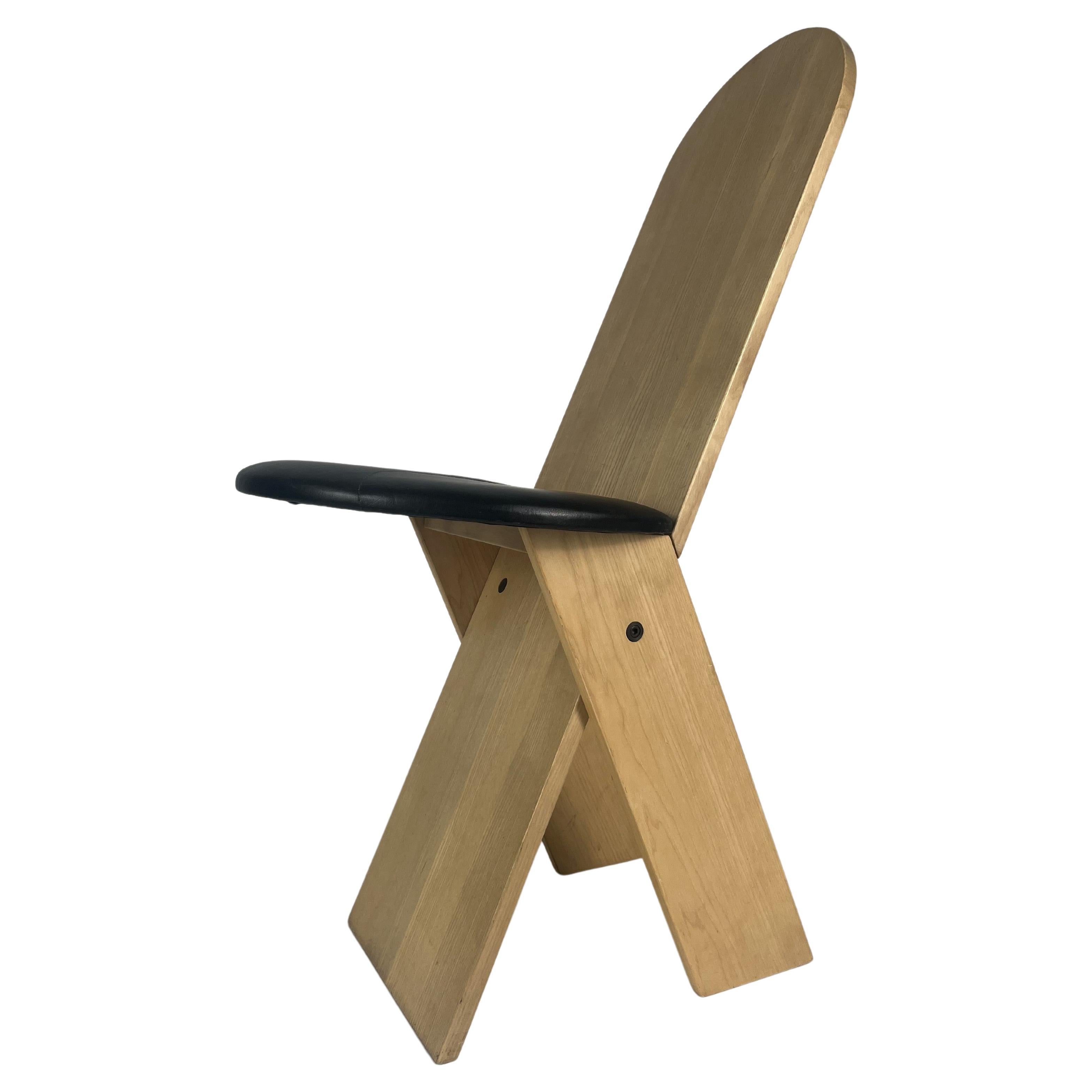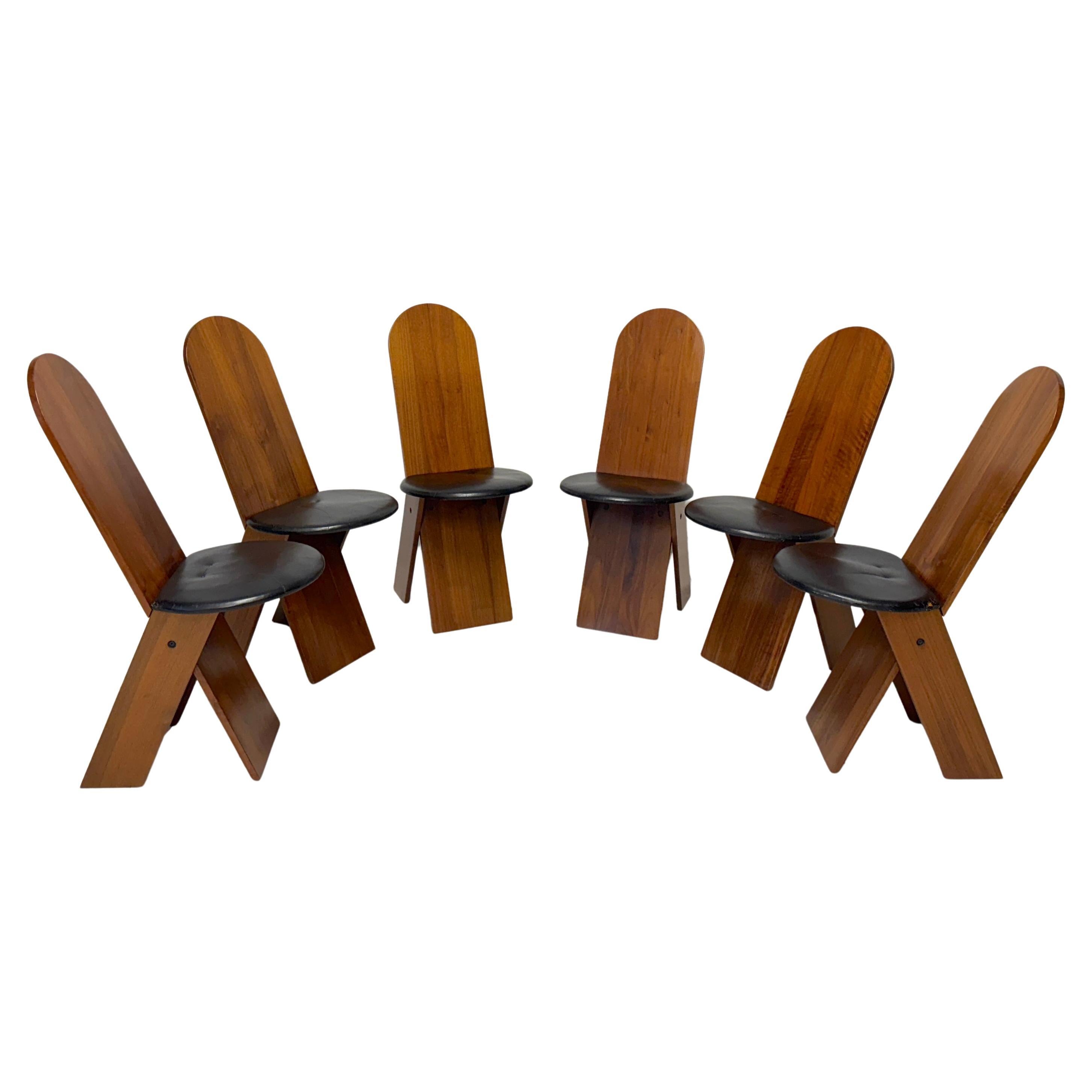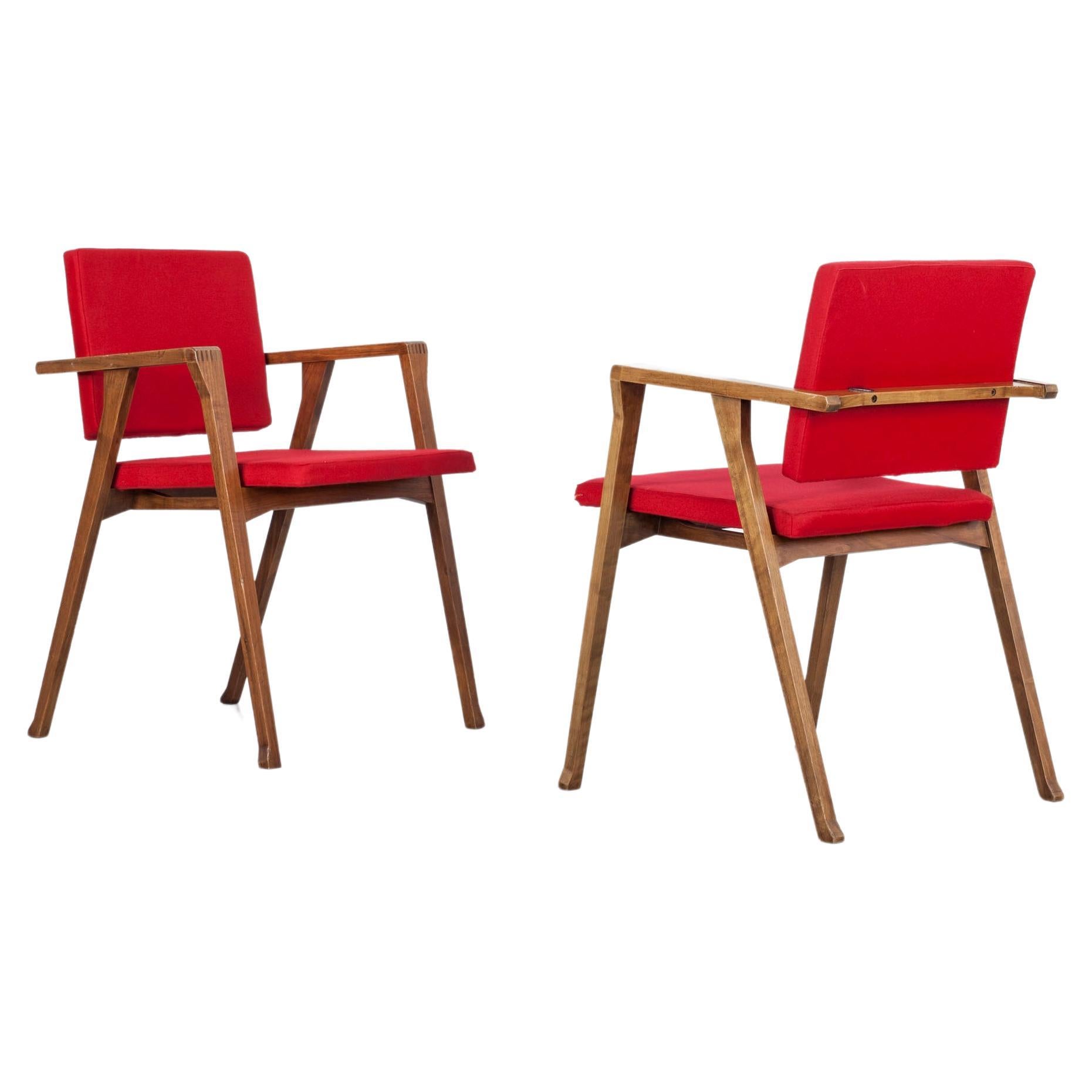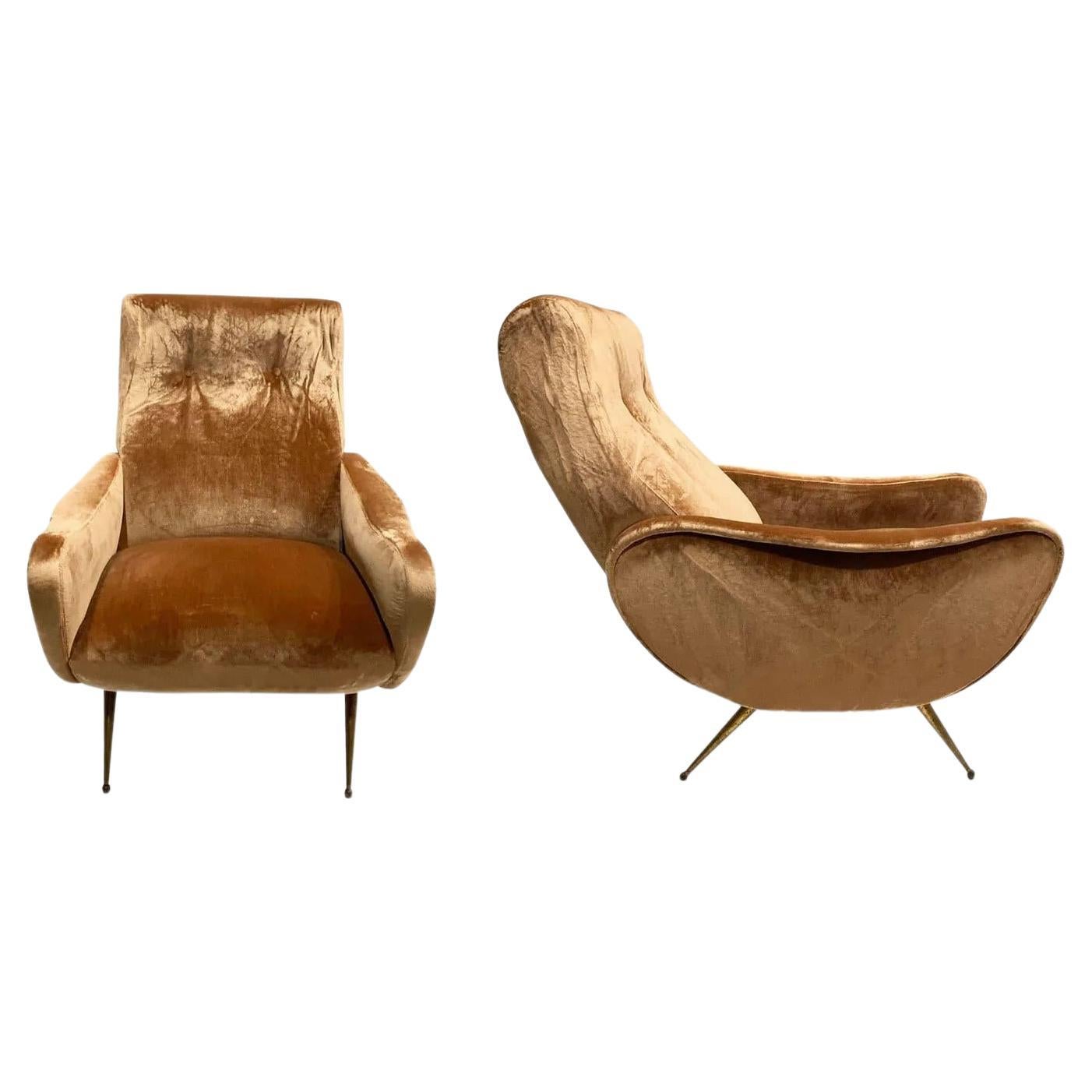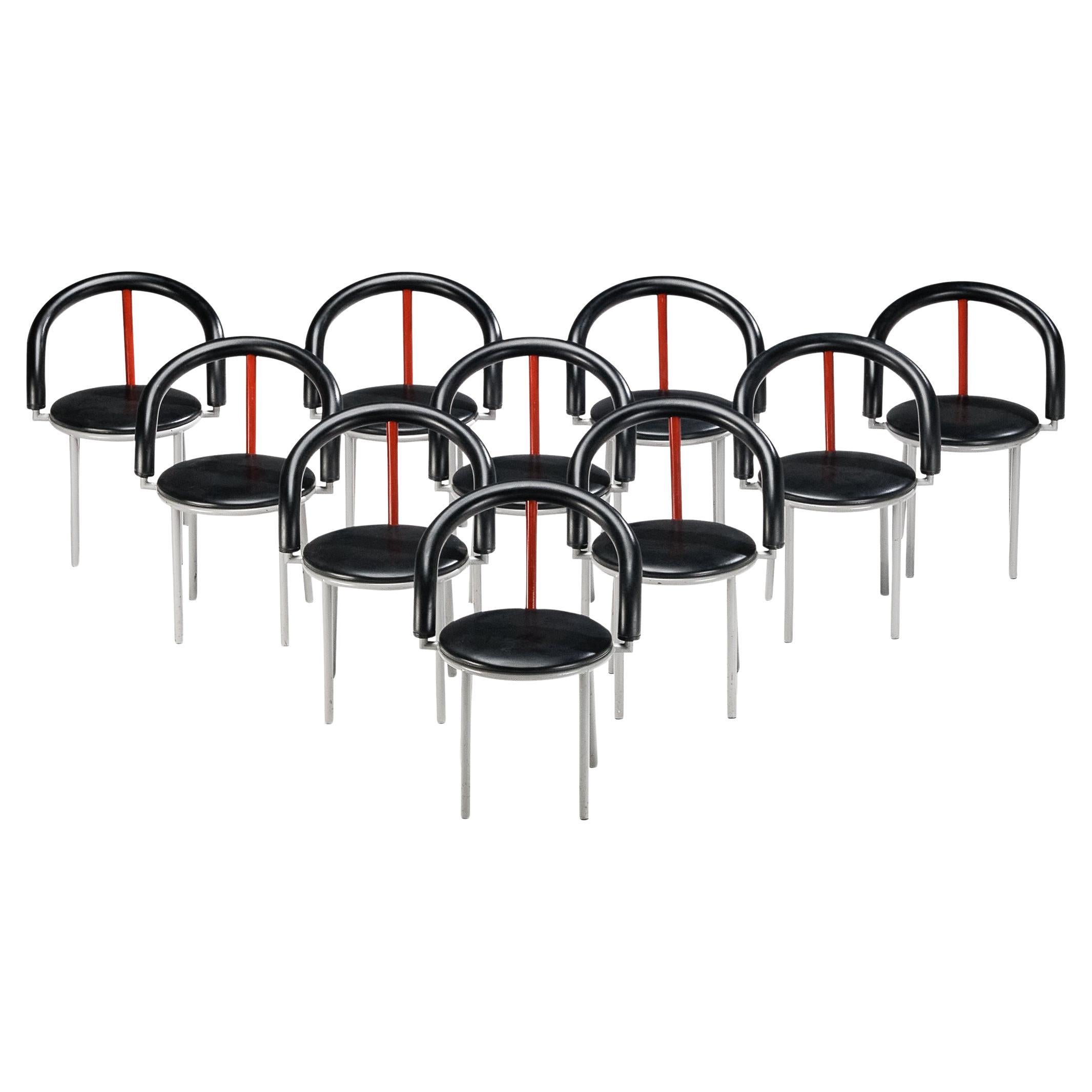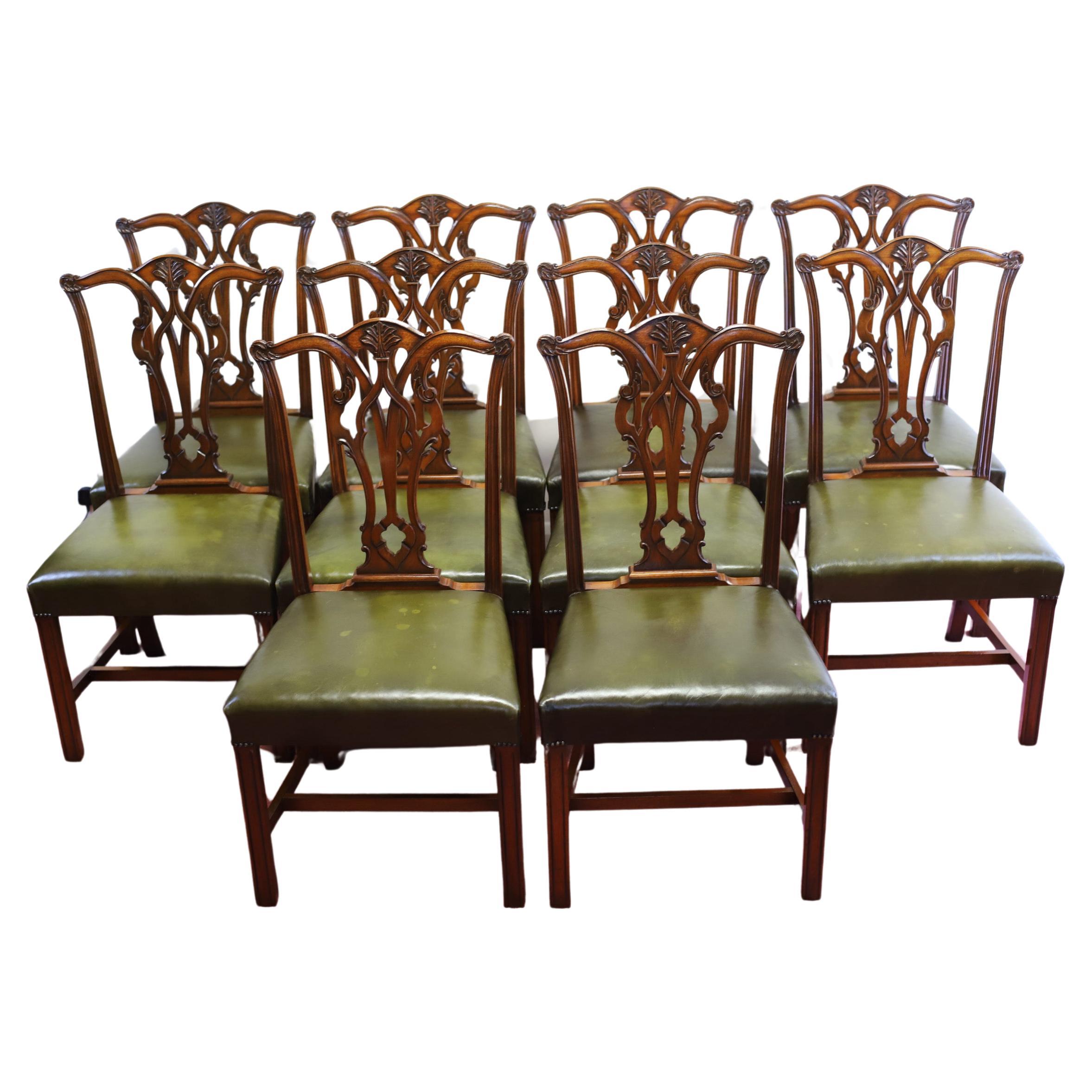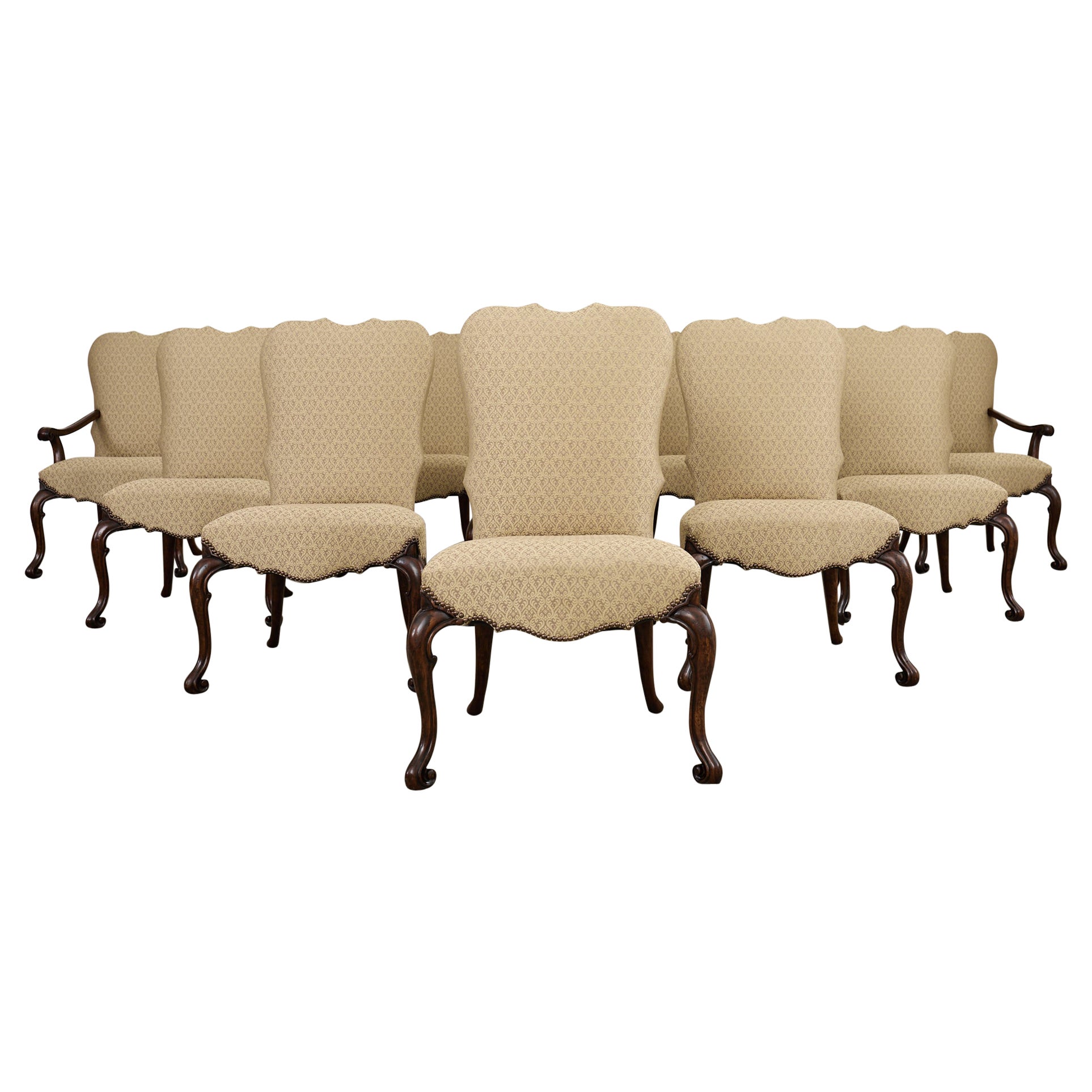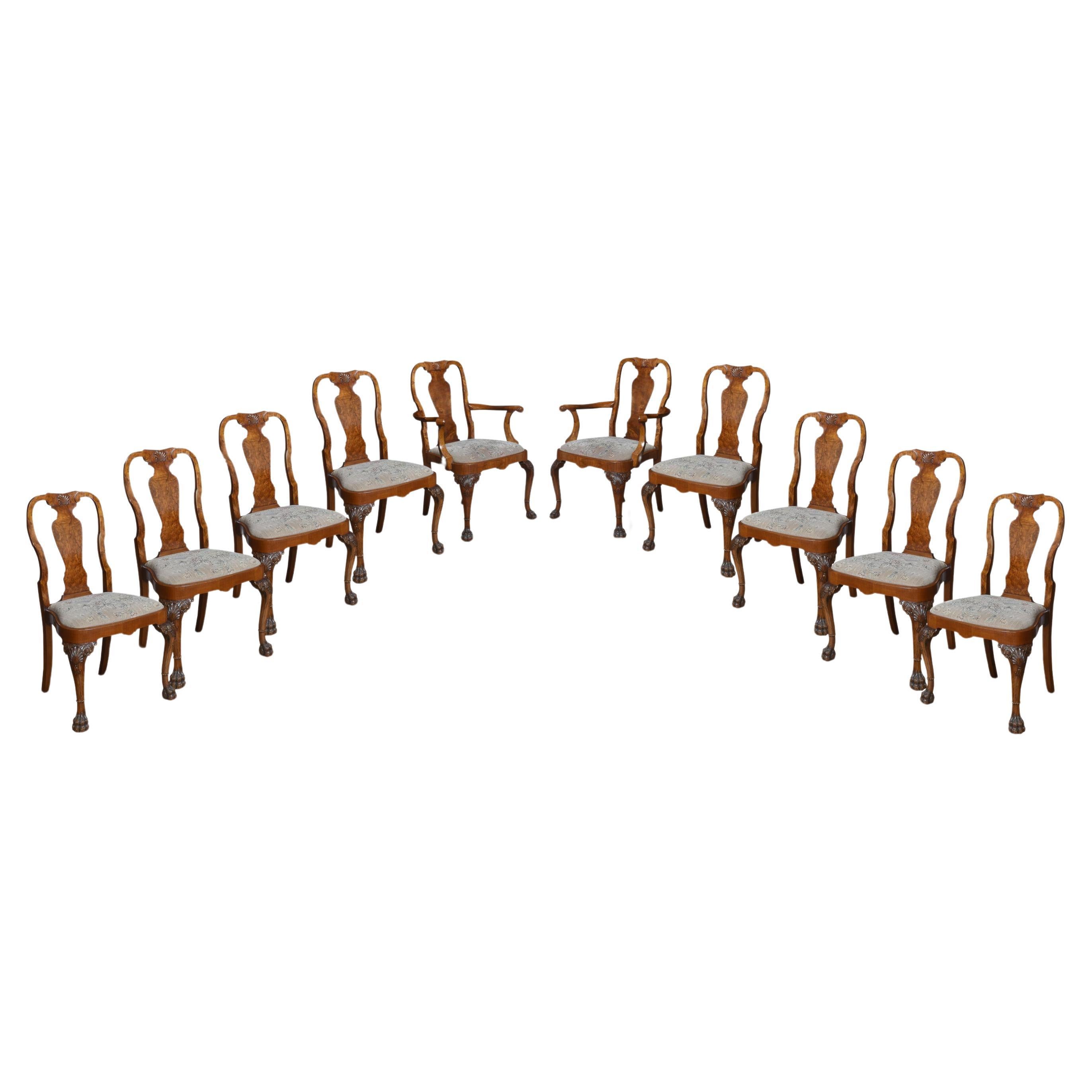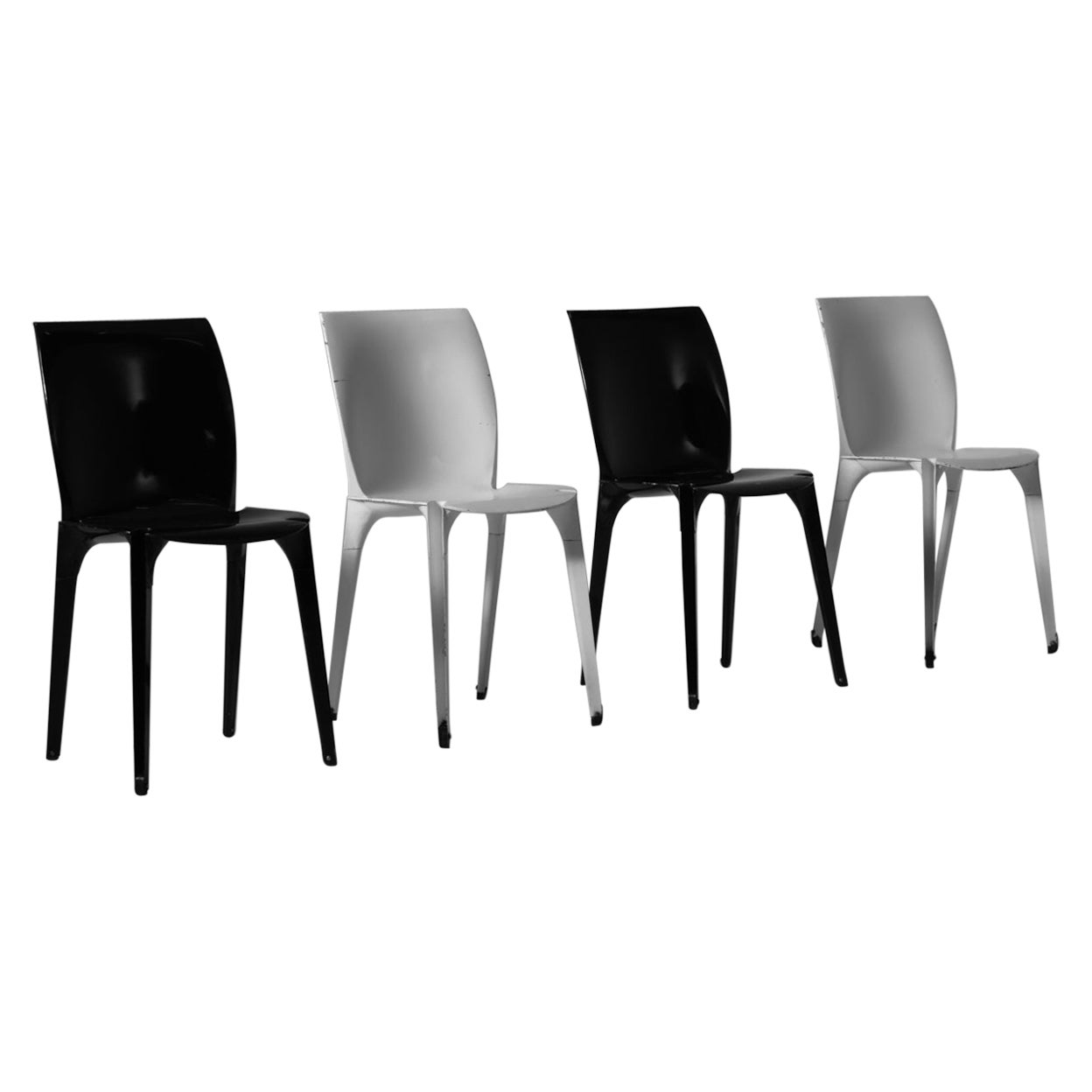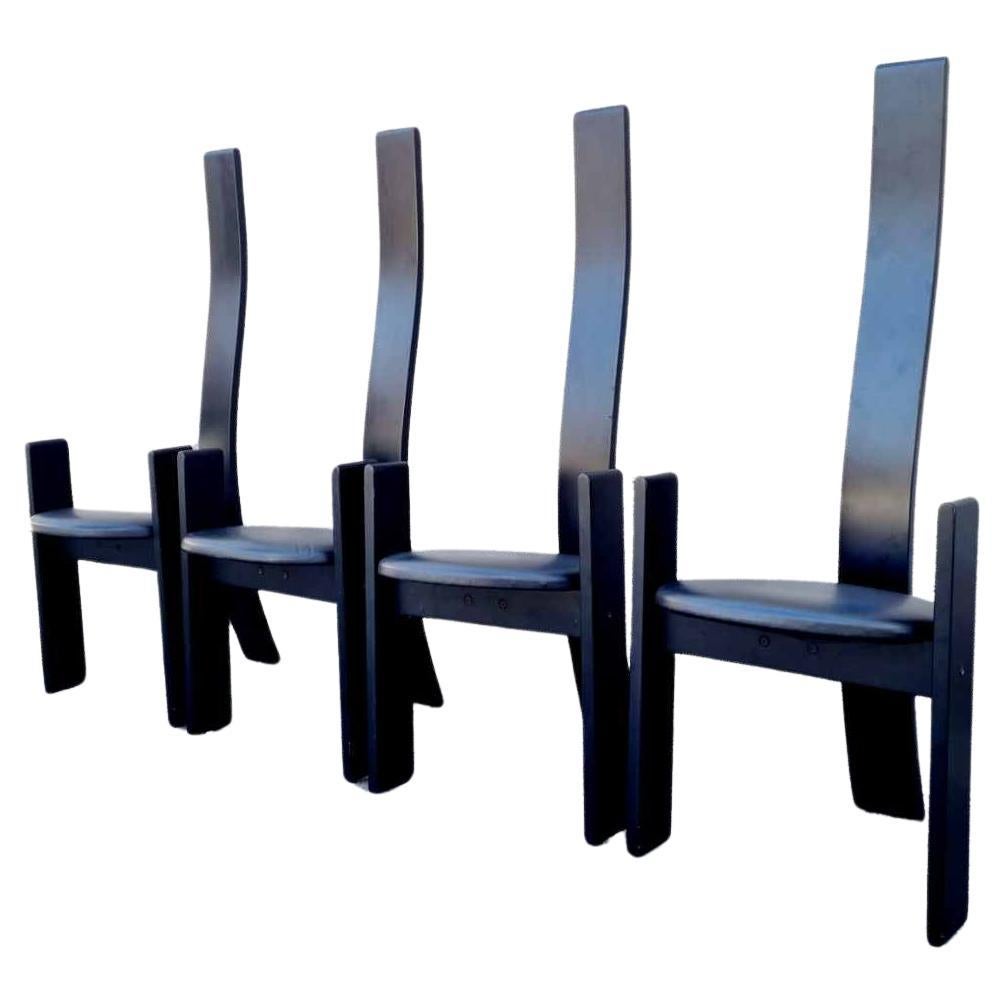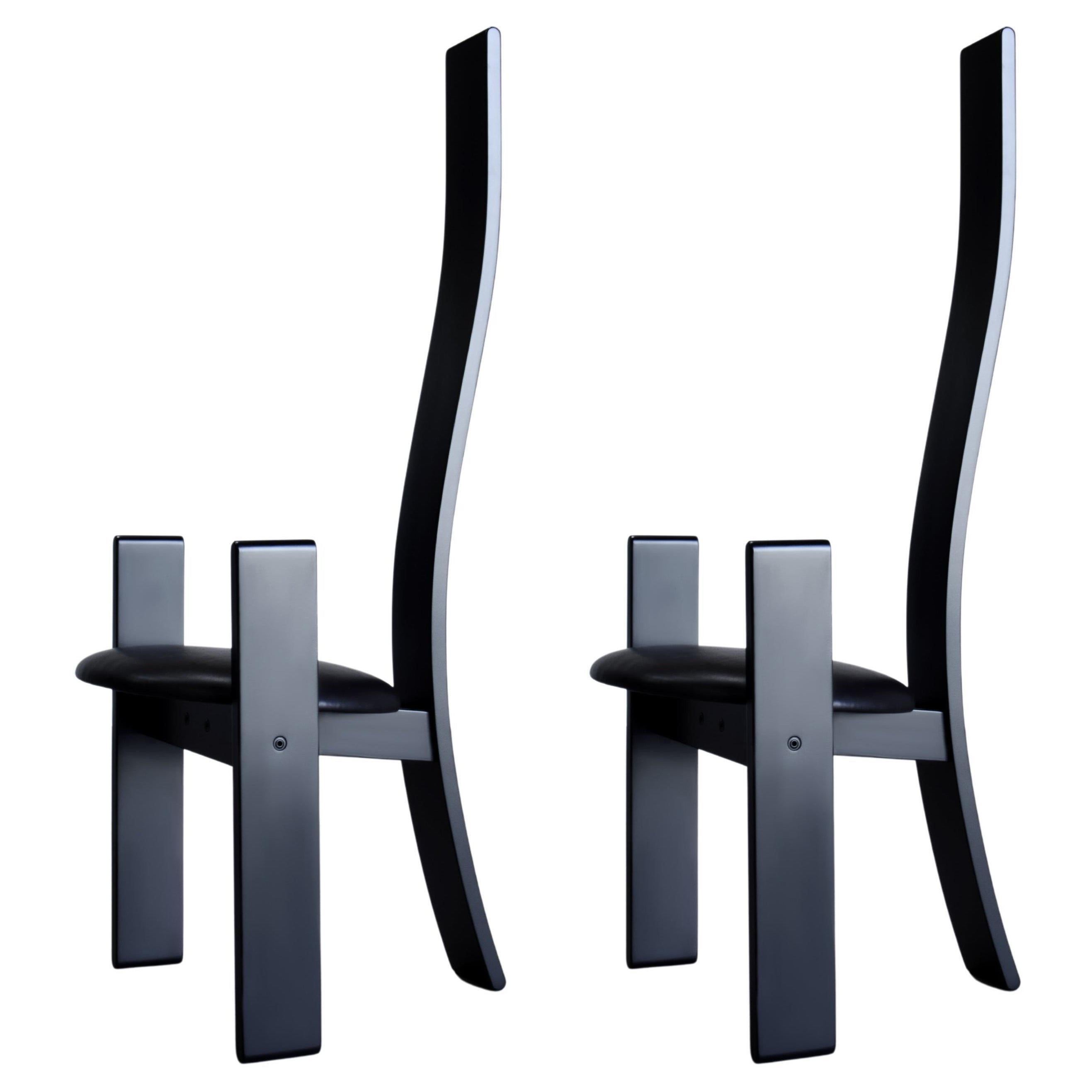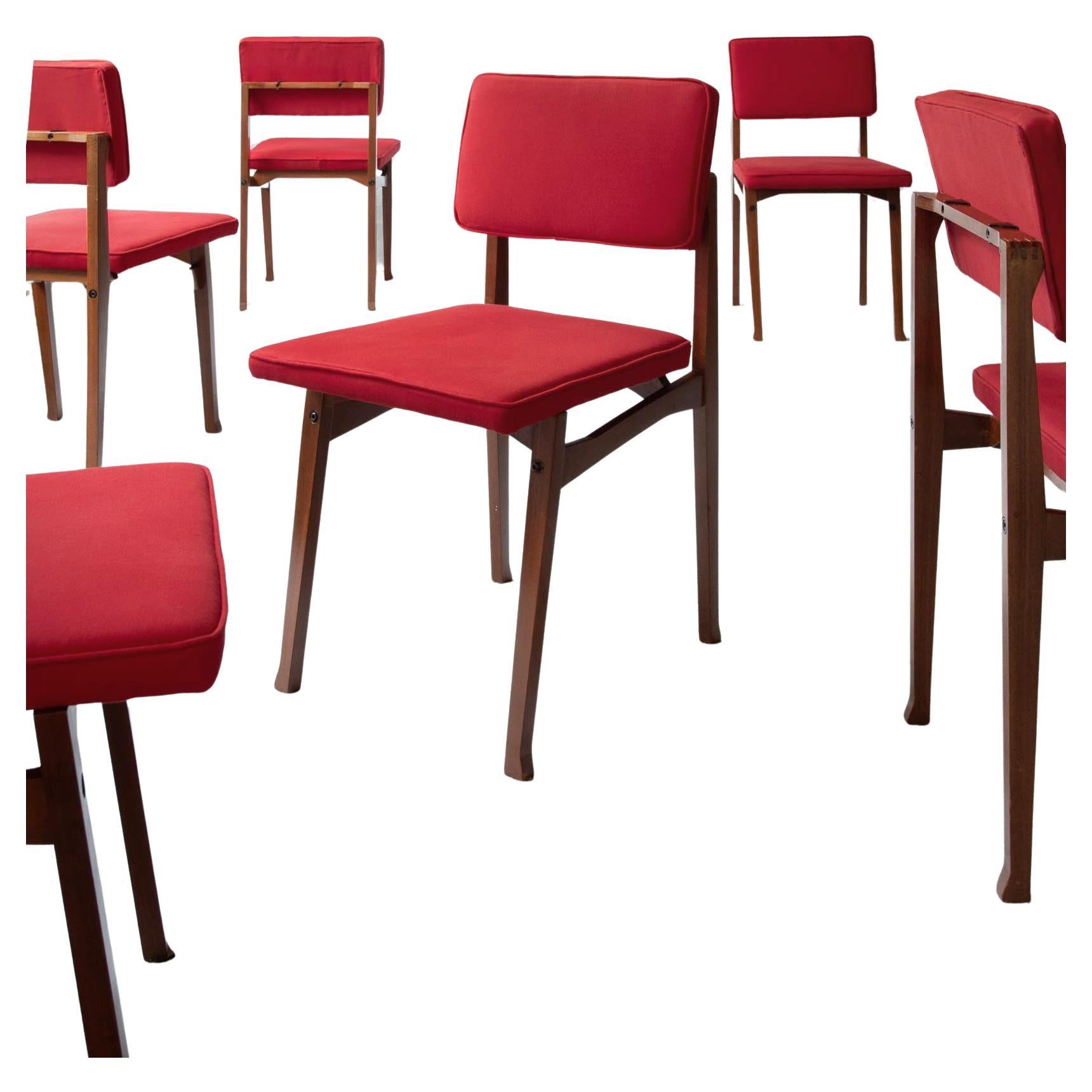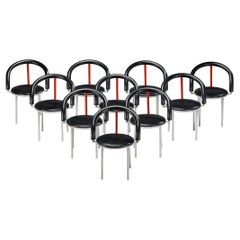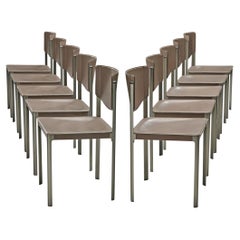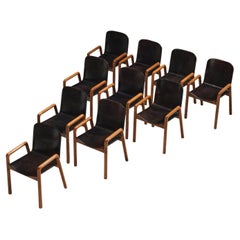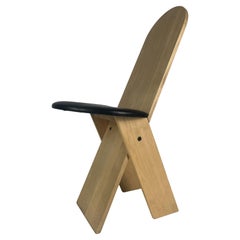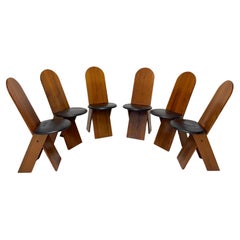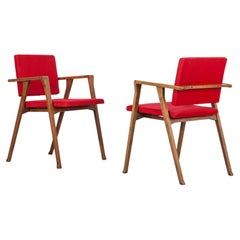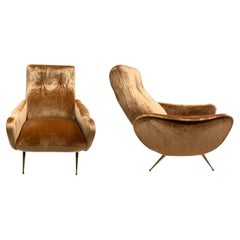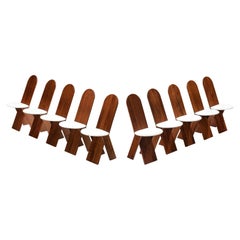
Marco Zanuso for Poggi Set of Ten Dining Chairs in Walnut
View Similar Items
Marco Zanuso for Poggi Set of Ten Dining Chairs in Walnut
About the Item
- Creator:Poggi (Manufacturer),Marco Zanuso (Designer)
- Dimensions:Height: 36.23 in (92 cm)Width: 15.36 in (39 cm)Depth: 21.66 in (55 cm)Seat Height: 18.12 in (46 cm)
- Sold As:Set of 10
- Style:Post-Modern (Of the Period)
- Materials and Techniques:
- Place of Origin:
- Period:
- Date of Manufacture:1973
- Condition:Wear consistent with age and use. Every item Morentz offers is checked by our team of 30 craftspeople in our in-house workshop. Special restoration or reupholstery requests can be done. Check ��‘About the item’ or ask our design specialists for detailed information on the condition.
- Seller Location:Waalwijk, NL
- Reference Number:Seller: 50111531 1stDibs: LU933130984352
Marco Zanuso
Italian designer Marco Zanuso helped cement his country’s place as a world leader in furniture design that used new materials in revolutionary ways.
Zanuso was part of a generation of furniture designers who encouraged a sharp departure from the traditionalism and classicalism that reigned over the design industry before the war. These designers, who are associated with what we now call mid-century modernism, experimented with new technologies and materials to deliver on the world’s newfound need for streamlined products that represented the future.
After graduating from the Polytechnic University of Milan in 1939 with a degree in architecture, Zanuso served in the Navy during World War II. Soon after the war, he opened his own design firm in Milan in 1945. He later became an editor at well-regarded design magazines Domus and Casabella.
Zanuso used this editorial platform to both promote new Italian designs as well as his own pieces, some of which he made using unconventional materials like foam and latex. For instance, his famous Lady armchair from 1951 is a composition of foam rubber and Nastro Cord, a recently invented textile band of rubberized fabric that eliminated the need for metal springs. It was one of several pieces he designed for Italian manufacturer Arflex, along with the 1949 Antropus chair and the 1951 Sleep-o-matic sofa.
Zanuso often collaborated with other like-minded creatives. From 1955 until 1957, he was Olivetti’s architect, designing factories across Brazil, and for nearly two decades, he collaborated with German designer Richard Sapper. The pair’s most famous product is the 4999 children’s chair, manufactured in the 1960s by Kartell in Italy. The stackable chair was the first to be manufactured entirely of injection-molded plastic.
Zanuso and Sapper also partnered on the 1962 Brionvega Doney 14, the first European-made portable transistor TV; its sleek, compact and curvy form deeply influenced the design of television sets that followed, which were far more sculptural in form than the rigid boxes that characterized early models.
From the 1970s onward, Zanuso taught architecture and industrial design at the Polytechnic University of Milan. He still exercised his creative talents, planning the headquarters for computer companies and renovating Italian theaters.
Each of Zanuso’s elegant works were demonstrative of a forward-looking sensibility. His projects saw an integration of novel industrial materials that not only helped emphasize the beauty of good design but also played a role in rendering these well-made products accessible to everyday consumers.
On 1stDibs, find a collection of vintage Marco Zanuso furniture, including armchairs, sofas, table lamps and other items.
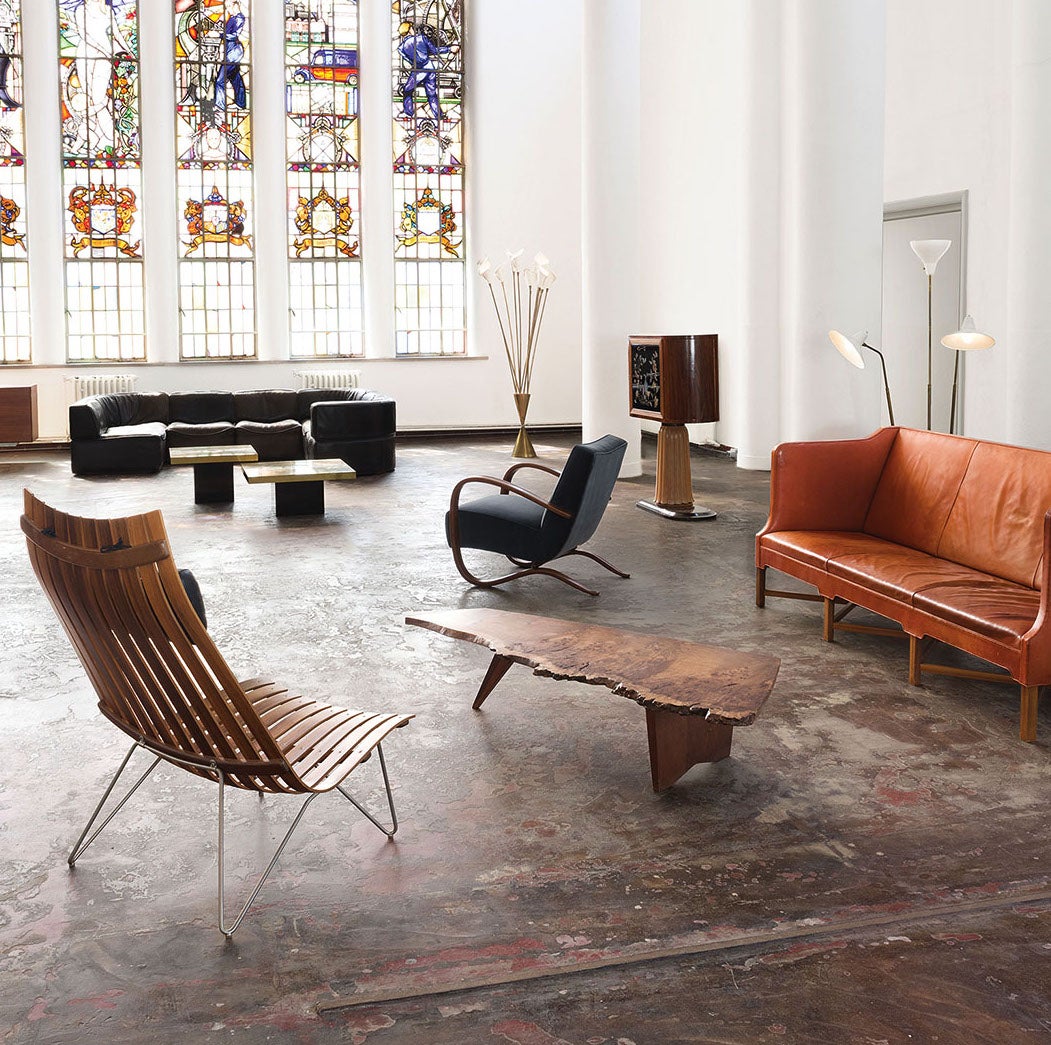
Established in 2006, Morentz has a team of approximately 55 restorers, upholsterers, interior advisers and art historians, making it a gallery, workshop and upholstery studio, all in one. Every day, a carefully selected array of 20th-century furniture arrives from all over the world at the firm’s warehouse, where the team thoroughly examines each piece to determine what, if any, work needs to be done. Whether that means new upholstery or a complete restoration, Morentz's aim is always to honor the designer’s intention while fulfilling the wishes of the client. The team is up to any challenge, from restoring a single piece to its original glory to furnishing a large-scale hotel project.
More From This Seller
View AllVintage 1980s Italian Post-Modern Dining Room Chairs
Metal
Vintage 1980s Italian Post-Modern Chairs
Steel
Vintage 1960s Italian Mid-Century Modern Dining Room Chairs
Aluminum
Vintage 1980s Italian Post-Modern Dining Room Chairs
Leather, Beech
Vintage 1960s Italian Mid-Century Modern Dining Room Chairs
Straw, Beech
Vintage 1960s Italian Mid-Century Modern Lounge Chairs
Steel, Chrome
You May Also Like
Vintage 1970s Italian Chairs
Leather, Ash
Vintage 1970s Italian Chairs
Leather, Wood
Vintage 1950s Italian Mid-Century Modern Chairs
Fabric, Wood
20th Century Italian Dining Room Chairs
Silk
Mid-20th Century British Chippendale Dining Room Chairs
Leather, Walnut
21st Century and Contemporary American Baroque Dining Room Chairs
Brass
Recently Viewed
View AllRead More
Why Marco Zanuso’s Coromandel House Was Ahead of Its Time — As Was He
The South African home is a testament to the Italian designer and architect’s foresight and eco-sensitivity.
This Paavo Tynell Chandelier Is a Radiant Bouquet
The alluring pendant light exemplifies the designer’s winsome mid-career work.
